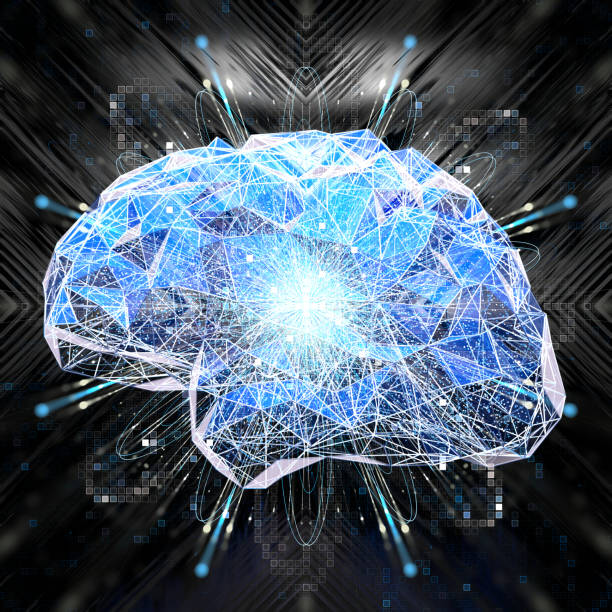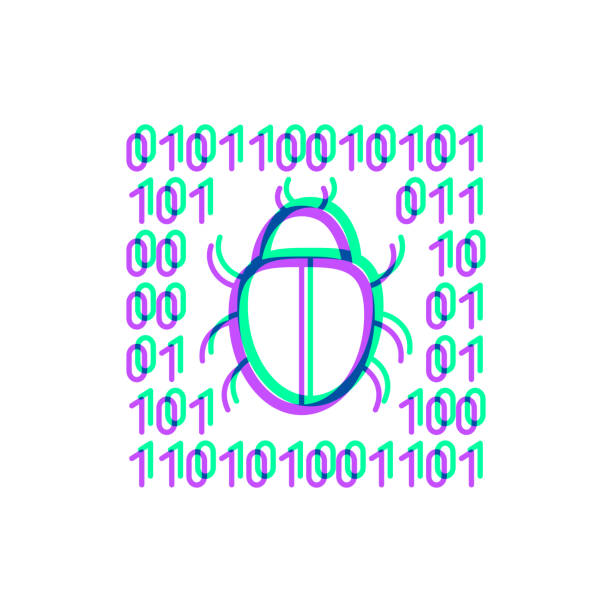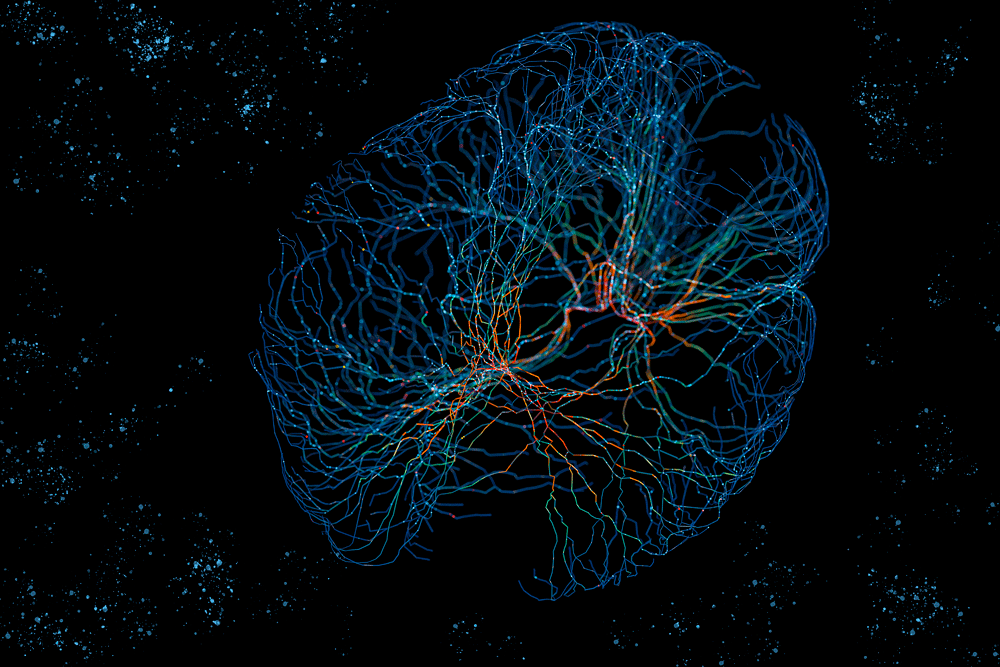Brain–Computer Interfaces (BCIs), also known as Brain–Machine Interfaces (BMIs), represent one of the most revolutionary intersections of neuroscience, engineering, and computer science. These systems allow direct communication between the human brain and external devices, bypassing traditional pathways of movement and speech. Through BCIs, neural signals generated by the brain can be decoded and translated into commands that control computers, prosthetic limbs, wheelchairs, or other machines. The concept, once confined to the realm of science fiction, has become an active area of research and technological development, offering transformative potential for medicine, rehabilitation, communication, and even human enhancement.
At its core, a Brain–Computer Interface enables bidirectional interaction between the brain and digital technology. This means information can flow from the brain to a machine (for control or communication) or from the machine to the brain (for sensory feedback or stimulation). Understanding how BCIs work requires exploring how neural signals are produced, how they are measured, and how they are interpreted by computational systems.
The Foundations of Brain Activity
The human brain is an extraordinarily complex organ composed of approximately 86 billion neurons, each capable of transmitting electrical impulses through networks of synaptic connections. These neurons communicate using electrochemical signals—tiny voltage fluctuations caused by the movement of ions across cell membranes. When a neuron is activated, it generates an electrical spike known as an action potential. Collectively, the activity of millions of neurons produces oscillatory electrical patterns known as brain waves.
Different brain regions specialize in distinct functions. The motor cortex, for example, controls voluntary movement by sending signals through the spinal cord to muscles, while the visual cortex processes information from the eyes. In a BCI system, the goal is to capture specific patterns of neural activity that correspond to particular thoughts, intentions, or actions—such as the intent to move a hand or focus attention on a visual stimulus.
The strength of BCIs lies in their ability to decode these neural patterns and convert them into usable commands. This decoding process relies on a deep understanding of the neural correlates of behavior and the application of sophisticated computational algorithms.
The Basic Architecture of a Brain–Computer Interface
All BCIs share a common architecture that involves several fundamental components: signal acquisition, signal processing, feature extraction, translation algorithms, and device output. The process begins with the detection of brain activity using sensors or electrodes. These signals are then amplified, filtered, and processed to remove noise. Next, features representing specific neural events are extracted and classified. Finally, these features are translated into commands that operate external devices or software applications.
In a closed-loop system, feedback is provided to the user, creating a cycle of interaction. For instance, when a user moves a cursor on a screen using brain activity, visual feedback helps refine control, leading to more accurate and natural interaction.
This multi-step process transforms raw, complex brain signals into meaningful control outputs. Each stage requires precision and reliability because even minor inaccuracies can disrupt the user’s ability to communicate or control the target system effectively.
Signal Acquisition: Capturing Neural Activity
The first step in any BCI system is the acquisition of neural signals. There are several methods for recording brain activity, each differing in invasiveness, spatial resolution, and temporal precision. The choice of recording technique determines the quality of the signals and the potential applications of the interface.
Non-invasive techniques, such as electroencephalography (EEG), measure electrical activity through electrodes placed on the scalp. EEG is widely used because it is safe, inexpensive, and relatively easy to implement. It captures voltage changes resulting from synchronous neural activity in the cortex. However, EEG signals are subject to distortion by the skull and scalp, which limit spatial resolution and signal clarity.
Functional near-infrared spectroscopy (fNIRS) is another non-invasive method that measures changes in blood oxygenation as an indirect indicator of neural activity. While it offers better spatial localization than EEG, it has slower temporal resolution because it tracks hemodynamic rather than electrical signals.
Magnetoencephalography (MEG) detects magnetic fields generated by neuronal currents, providing high temporal accuracy and improved spatial precision compared to EEG. However, MEG systems are large, expensive, and require shielded rooms, which limit their practicality for most applications.
Invasive recording techniques, by contrast, involve implanting electrodes directly into or on the surface of the brain. Intracortical microelectrode arrays can record the activity of individual neurons, providing unparalleled resolution. Electrocorticography (ECoG), which places electrodes on the cortical surface beneath the skull, captures high-quality signals with reduced noise compared to EEG. These invasive methods enable precise decoding of movement intentions and fine control of prosthetic devices but come with surgical risks and long-term biocompatibility challenges.
The trade-off between signal fidelity and invasiveness remains one of the central engineering dilemmas in BCI design. Non-invasive systems are safer and more accessible but offer lower performance, whereas invasive systems deliver superior accuracy but at the cost of surgical intervention.
Signal Processing: Cleaning and Amplifying the Data
Once neural signals are captured, they must be processed to remove unwanted noise and artifacts. Brain activity signals are typically weak, often in the microvolt range, and can be easily contaminated by muscle activity, eye movements, or external electrical interference. Signal processing techniques aim to enhance the signal-to-noise ratio so that meaningful neural patterns can be accurately identified.
This stage often includes amplification, filtering, and digital transformation. Band-pass filters isolate frequencies associated with particular neural processes. For example, motor intention may correspond to activity in the mu (8–13 Hz) or beta (13–30 Hz) frequency bands, while cognitive states like attention may involve theta or gamma oscillations.
Artifact removal techniques such as independent component analysis (ICA) help separate brain-generated signals from non-neural noise. Once the data is cleaned and digitized, it becomes suitable for feature extraction and classification by computational algorithms.
Feature Extraction: Identifying Neural Signatures
Feature extraction involves identifying specific aspects of the processed signal that correspond to distinct mental states or intentions. The brain’s electrical activity contains a wealth of information, but only certain patterns are relevant for control or communication.
Features can include spectral power (the strength of particular frequency bands), event-related potentials (time-locked responses to stimuli), or spike trains (series of action potentials from individual neurons). For example, in EEG-based BCIs, the P300 wave—a positive voltage deflection occurring around 300 milliseconds after a relevant stimulus—is often used in communication systems for selecting letters or commands.
In motor BCIs, features related to motor cortex activity are analyzed. When a person imagines moving a limb, specific neuronal populations fire in predictable patterns. Machine learning algorithms detect these patterns and associate them with corresponding control outputs, such as moving a robotic arm or cursor in a particular direction.
Feature extraction reduces the complexity of neural data, allowing algorithms to focus on the most informative elements, which enhances accuracy and efficiency.
Signal Translation: Decoding Brain Activity
The translation or decoding step is the computational heart of a BCI. It converts extracted features into actionable commands. This process relies on statistical models and machine learning techniques that learn the relationship between neural signals and the user’s intended actions.
Linear models, such as linear discriminant analysis or support vector machines, have traditionally been used for their simplicity and speed. However, more advanced methods—such as deep neural networks—are increasingly employed to capture non-linear relationships in neural data. These models can be trained on datasets of brain activity recorded while the user performs or imagines specific tasks. Once trained, the model predicts intentions in real time, enabling control over external devices.
Adaptation is another critical aspect of decoding. The human brain is dynamic, and neural signals can change over time due to fatigue, attention, or plasticity. Adaptive algorithms continuously update their parameters to maintain performance, creating systems that can learn and improve with use.
Output Devices: Turning Thought into Action
After decoding, the interpreted neural commands are transmitted to an external device. Depending on the BCI’s purpose, the output may involve moving a robotic limb, controlling a cursor, typing on a virtual keyboard, driving a wheelchair, or interacting with software.
In motor rehabilitation, BCIs can drive functional electrical stimulation systems that activate paralyzed muscles, restoring partial movement to individuals with spinal cord injuries. In communication applications, BCIs allow users with severe paralysis or locked-in syndrome to spell words by focusing on specific visual cues or imagined movements.
Some BCIs operate bidirectionally, not only sending information from the brain to the machine but also providing feedback to the brain. This sensory feedback can take various forms—visual, auditory, or tactile—and helps users refine control by creating a natural sense of interaction. For example, a user operating a robotic arm may receive sensory feedback that mimics the sensation of touch, enhancing precision and intuitiveness.
Invasive and Non-Invasive BCIs
BCIs are often categorized based on how signals are recorded. Invasive BCIs, such as those using implanted microelectrode arrays, offer high spatial and temporal resolution, capturing the activity of individual neurons. These systems have enabled paralyzed individuals to control robotic limbs with remarkable dexterity. However, their use is limited to clinical and research settings due to surgical and ethical concerns.
Semi-invasive systems, such as ECoG-based BCIs, provide a balance between resolution and safety. Electrodes placed on the cortical surface can record high-fidelity signals without penetrating brain tissue, reducing inflammation and long-term risks.
Non-invasive BCIs, using EEG or fNIRS, are more widely accessible and suitable for daily use. Though their performance is lower, ongoing advances in signal processing and wearable technologies are narrowing the gap between invasive and non-invasive approaches.
The Role of Machine Learning and Artificial Intelligence
Machine learning has become indispensable in modern BCIs. Neural activity is complex, high-dimensional, and variable across individuals and time. Machine learning algorithms analyze large datasets to find patterns that correlate with specific intentions or states.
Supervised learning approaches train models using labeled data, such as brain signals recorded during known actions. Unsupervised learning methods, in contrast, identify hidden patterns without explicit labels, helping uncover new features in neural data. Reinforcement learning, where algorithms adapt through feedback and rewards, is particularly valuable for improving real-time control in adaptive BCIs.
Deep learning, a subset of machine learning, has shown exceptional potential in decoding neural signals. Convolutional neural networks (CNNs) and recurrent neural networks (RNNs) can model temporal and spatial dependencies in brain activity, improving classification accuracy and robustness.
AI-driven BCIs are not static; they evolve with the user. As users gain experience, their brain activity adapts, and the algorithms adjust correspondingly. This co-adaptive relationship between human and machine enhances performance and comfort, bringing BCIs closer to practical everyday use.
Neuroplasticity and BCI Learning
An important feature of the brain is its plasticity—the ability to reorganize neural connections in response to experience. BCI use exploits this property, as users learn to modulate their brain activity to achieve desired outcomes. Over time, consistent feedback and training allow users to develop mental strategies that optimize performance.
Studies have shown that long-term BCI use can even induce structural and functional changes in the brain, strengthening specific neural pathways. This phenomenon is particularly valuable in rehabilitation, where BCIs are used to promote recovery after stroke or spinal cord injury. By coupling mental effort with sensory feedback or muscle activation, BCIs encourage the re-establishment of motor control circuits.
The learning aspect of BCIs emphasizes the dynamic partnership between human neurophysiology and machine intelligence—a collaboration that extends the natural capabilities of the brain.
Clinical and Therapeutic Applications
BCIs have opened new frontiers in medicine, particularly for individuals with neurological disorders or physical disabilities. In cases of paralysis, stroke, or neurodegenerative disease, BCIs offer communication and control channels independent of muscular activity.
For patients with amyotrophic lateral sclerosis (ALS) or locked-in syndrome, BCIs provide a means to communicate by detecting brain responses to visual or auditory stimuli. In motor rehabilitation, BCIs combined with robotic exoskeletons or functional electrical stimulation can restore partial mobility. Such systems detect the patient’s intention to move and assist in executing the movement, reinforcing neural pathways associated with motor control.
Neuroprosthetics represent another major clinical application. These devices restore sensory or motor function by directly interfacing with the nervous system. Cochlear implants, though not traditionally classified as BCIs, exemplify the principle of converting neural signals into perception. More advanced research aims to create visual prostheses for the blind and tactile feedback systems for amputees.
Beyond restoration, BCIs are being explored for cognitive enhancement, pain management, and treatment of psychiatric conditions. Neurofeedback BCIs, for instance, train individuals to regulate their brain activity to reduce anxiety, improve attention, or enhance memory.
Ethical, Legal, and Social Considerations
As BCIs advance, they raise profound ethical and societal questions. Direct access to brain activity touches on issues of privacy, autonomy, and identity. If neural signals can be decoded, who controls and protects that information? Ensuring data security and informed consent is critical, especially as BCIs move toward commercial and consumer applications.
Another concern involves the potential for dependency or cognitive manipulation. While therapeutic BCIs can restore lost functions, enhancement-oriented systems could alter human cognition in unpredictable ways. The distinction between therapy and enhancement blurs as technology becomes more powerful.
Long-term safety of invasive implants also remains a concern. Chronic electrode implantation can trigger immune responses, scar tissue formation, or degradation of signal quality over time. Regulatory frameworks must evolve to address these challenges, ensuring that BCIs are developed responsibly and equitably.
Emerging Technologies and Future Directions
The field of BCIs is evolving rapidly, driven by advances in neuroscience, materials science, and artificial intelligence. Novel electrode materials such as graphene and flexible polymers promise improved biocompatibility and signal stability. Wireless implantable devices are reducing the need for external connectors, enhancing mobility and safety.
Neural dust and micro-scale implants are being developed to record from deep brain regions with minimal invasiveness. These tiny sensors can communicate wirelessly with external receivers, paving the way for fully implantable BCIs.
Non-invasive BCIs are also advancing through high-density EEG caps, dry electrodes, and hybrid systems that combine multiple modalities (such as EEG and fNIRS). These technologies aim to deliver richer data without surgical risks.
In parallel, the integration of BCIs with virtual and augmented reality is opening new avenues for immersive rehabilitation and neurotraining. By coupling brain control with realistic feedback environments, users can engage in naturalistic interactions that enhance learning and performance.
Another frontier is brain-to-brain communication, where neural activity from one individual is transmitted to another via a computer interface. Though still experimental, such systems hint at the possibility of direct information exchange between minds, raising both exciting and unsettling possibilities for the future of communication.
The Convergence of Neuroscience and Engineering
BCIs embody the convergence of multiple disciplines—neuroscience, electrical engineering, computer science, and psychology. Neuroscience provides the foundational understanding of brain function, while engineering develops the hardware and algorithms that make interfacing possible. Computer science, particularly artificial intelligence, enables real-time decoding and adaptation.
The synergy of these fields has transformed BCIs from laboratory curiosities into practical technologies. Projects such as Neuralink, Paradromics, and academic initiatives worldwide are accelerating progress toward high-bandwidth, fully implantable, and user-friendly systems. These efforts aim not only to restore lost capabilities but to expand the boundaries of human interaction with technology.
The Long-Term Vision: Merging Mind and Machine
The ultimate vision of BCIs extends beyond medical rehabilitation. It envisions a future in which humans can interface seamlessly with digital environments. In such a world, thoughts could directly control devices, and sensory experiences could be shared or augmented through neural links.
Some researchers foresee applications in education, entertainment, and work, where BCIs enhance focus, creativity, or memory. Others imagine collective intelligence systems, where interconnected brains form networks that collaborate beyond verbal communication.
While these ideas remain speculative, the trajectory of BCI research suggests that the line between biological and artificial intelligence will continue to blur. The challenge lies not only in achieving technical feasibility but in ensuring that such integration respects human values, autonomy, and dignity.
Conclusion
Brain–Computer Interfaces stand at the forefront of technological and scientific innovation, representing humanity’s most direct attempt to bridge thought and machine. They work by capturing neural activity, decoding its meaning through sophisticated algorithms, and translating it into actions in the physical or digital world. Through invasive and non-invasive methods alike, BCIs transform patterns of brain activity into a new form of interaction that transcends traditional limitations of the human body.
The path toward practical BCIs is marked by extraordinary progress and equally profound challenges. Advances in signal acquisition, artificial intelligence, materials science, and neuroplasticity research continue to expand what is possible. At the same time, ethical and social considerations demand vigilance to ensure these technologies serve humanity responsibly.
Ultimately, the promise of BCIs lies not only in restoring lost functions but in redefining what it means to communicate, move, and think. By decoding the language of the brain, we are beginning to rewrite the interface between mind and machine—a transformation that could reshape both human capability and human identity in the decades to come.






